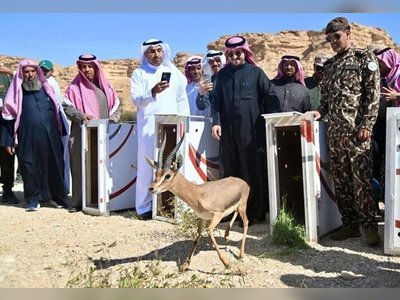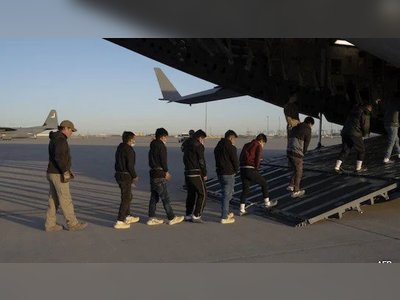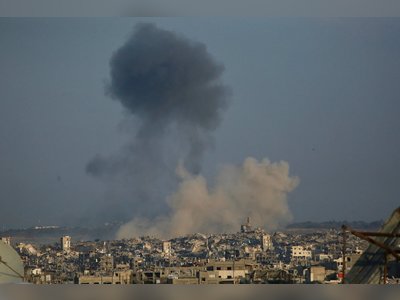Russia and Iran Link Their National Payment Systems to Circumvent Sanctions
Russia and Iran have linked their national payment systems as a means to bypass global sanctions, seeking to address their exclusion from the international SWIFT payment network. As reported by Iranian media, Iranian credit cards are now functional for cash withdrawals in Russia. This development is a reaction to sanctions imposed on both nations in recent years. Additionally, there are plans for comparable partnerships with other countries, such as Iraq, Afghanistan, and Turkey.
In a formal announcement on Monday in Tehran, Iran and Russia disclosed the integration of Russia's Mir payment system with Iran's Sataab network. This initiative, set in three phases, aims to circumvent global economic sanctions, particularly the countries' disconnection from SWIFT. Initially, this integration will enable Iranian tourists to withdraw rubles from ATMs in Russia, with plans for Russian citizens to eventually use their cards in Iran.
Since 2018, Iranian banks have been cut off from SWIFT, which handles most global financial transactions. This exclusion is part of broader sanctions placed on Iran following the U.S. withdrawal from the 2015 nuclear agreement. In February 2022, shortly after Russia's military action in Ukraine, the West imposed a partial disconnection of Russia from SWIFT as part of sanctions intended to disrupt financial flows linked to the conflict.
The Iranian state television channel IRINN recently aired a demonstration of an Iranian bank card being used for a cash withdrawal at a Russian ATM, made possible through the linkage of the Sataab network to Russia's Mir system. The report stated that Iranians can now access funds in Russia and will eventually be able to use their cards for in-store purchases.
The integration will extend to nations with strong financial and social connections to Iran, such as Iraq, Afghanistan, and Turkey. Mohammad Reza Farzin, the governor of Iran's central bank, highlighted that this banking systems merger represents a notable step toward establishing regional economic cooperation, advancing de-dollarization, and facilitating economic and tourism exchanges between Iran and Russia.
At the official launch, Farzin remarked, "The project we are celebrating today was initiated to integrate payment networks and ease money transfers between the citizens of our two countries."
In late September, Iranian Finance Minister Abdolnasser Hemmati and Russian Minister of Economic Development Maxim Reshetnikov discussed increasing trade between Iran and countries within the Eurasian Economic Union. Reshetnikov expressed optimism for the process to speed up. Discussions included customs issues, Russian investments in the oil sector, and trade currency strategies as part of their joint stance against U.S.-led Western sanctions.
Iran's President Ebrahim Raisi recently remarked, "We are confident that collaborative projects between Iran and Russia will significantly equip both nations to withstand stringent sanctions."
Since 2018, Iranian banks have been cut off from SWIFT, which handles most global financial transactions. This exclusion is part of broader sanctions placed on Iran following the U.S. withdrawal from the 2015 nuclear agreement. In February 2022, shortly after Russia's military action in Ukraine, the West imposed a partial disconnection of Russia from SWIFT as part of sanctions intended to disrupt financial flows linked to the conflict.
The Iranian state television channel IRINN recently aired a demonstration of an Iranian bank card being used for a cash withdrawal at a Russian ATM, made possible through the linkage of the Sataab network to Russia's Mir system. The report stated that Iranians can now access funds in Russia and will eventually be able to use their cards for in-store purchases.
The integration will extend to nations with strong financial and social connections to Iran, such as Iraq, Afghanistan, and Turkey. Mohammad Reza Farzin, the governor of Iran's central bank, highlighted that this banking systems merger represents a notable step toward establishing regional economic cooperation, advancing de-dollarization, and facilitating economic and tourism exchanges between Iran and Russia.
At the official launch, Farzin remarked, "The project we are celebrating today was initiated to integrate payment networks and ease money transfers between the citizens of our two countries."
In late September, Iranian Finance Minister Abdolnasser Hemmati and Russian Minister of Economic Development Maxim Reshetnikov discussed increasing trade between Iran and countries within the Eurasian Economic Union. Reshetnikov expressed optimism for the process to speed up. Discussions included customs issues, Russian investments in the oil sector, and trade currency strategies as part of their joint stance against U.S.-led Western sanctions.
Iran's President Ebrahim Raisi recently remarked, "We are confident that collaborative projects between Iran and Russia will significantly equip both nations to withstand stringent sanctions."











